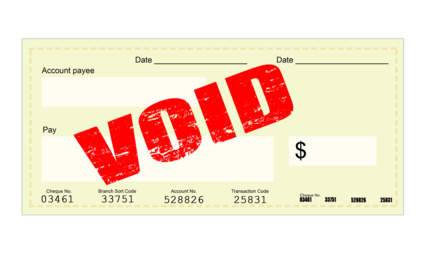Is the 50 30 20 Rule After Taxes? How To Meet Your Financial Goals
Budgeting is incredibly important for your financial well-being, especially if you want to save money. Yet, it's something that a lot of people don't do, often because they expect it to be time-consuming. Many people avoid creating a budget simply because they think they don't have the time.
While you can create a detailed budget, using a general budgeting method like the 50/30/20 rule makes the process straightforward and efficient. It, however, starts with understanding your pay stub to know your exact net income. Your pay stub shows this detail, which is why you need a pay stubs generator to obtain one.
One of the most popular general budgeting tools is the 50/30/20 rule. You might have heard of this tool, but there's a chance that you might not know what it means. In this guide, we'll be taking a look at just that. So, to find out more about this budgeting tool, keep on reading.
What Is the 50/30/20 Rule?
First, let's take a look at the 50/30/20 definition. The 50/30/20 rule works in percentages, allowing you to divide what you earn. They would be divided into three categories: 50%, 30%, and 20%. Different outgoing payments will be put into these categories, and dividing your spending this way allows you to effectively save. But what are these three categories?
The rule dictates that you should spend 50% of your income on needs, 30% on wants. The remaining 20% of your income should be on savings and debt repayment.
The 50/30/20 Budget Rule
Here's how the 50/30/20 budget rule works:
50% - Needs
The majority of your monthly income will go on "needs". These are outgoing payments that are essential for survival and basic life. So, 50% of your income will go on essential needs and living expenses. This includes housing (rent or mortgage), groceries, utilities (such as electricity, gas and water), transportation to work, and health insurance. It can also include minimum debt payments, such as credit card bills. Anything that is not considered essential is not a need.
30% - Wants
The next 30% of your income will go on "wants"; they are things that improve your quality of life. Although they are not essential. This is why a smaller portion of your income is spent here. Examples include streaming services, gym memberships, eating out, shopping trips, and vacations. This category covers discretionary spending.
20% - Savings/Debts
Finally, 20% of your income should go to savings or debt repayment. This means that you should allocate 20% of your funds for retirement savings or building an emergency fund. You can even use it to make extra debt payments. If you have high-interest debt, you need to prioritize debt repayment before other savings goals. However, your retirement contributions should still be a priority.
Is the 50/30/20 Rule After Taxes?
You might need to know if the 50/30/20 rule applies before or after taxes; the answer is clear. The rule uses your monthly after-tax income. This is your net income, or your take-home pay. It refers to the money that lands in your bank account after taxes, health insurance, and retirement contributions are deducted. When calculating your monthly after-tax income, make sure to use this net income figure, not your gross income. Therefore, know how to calculate net income. You can also simply make your pay stub online to view it.
So, to be direct, is the 50/30/20 rule gross or net? The answer is that it is always based on net income.
Does the 50/30/20 Rule Work?
The rule is simple. All you need to do to apply it is to separate your monthly after-tax income into three percentile categories. Working out 50% of your income is straightforward, and then you simply divide what's left by 5. Your money can then be divided in a ratio of 3:2. With the overall balance for each category calculated, you simply ensure that you stay within those amounts.
Due to the simplicity of this rule, a lot of people question, "Does the 50/30/20 rule work?" But, by all accounts, it does. It is basic, but it allows you to save a minimum of 20% of your income every month. Likewise, if you’re owing or in debt, the budget rule allows you to pay it off. It doesn’t affect your day-to-day life too greatly.
However, just like all budgeting tools, the 50/30/20 rule is only as effective as you make it. Budgeting requires discipline, so it will only be effective for you if you stick to the categories and avoid overspending. To ensure this, you have to fully understand how to use the 50/30/20 rule.
How To Use the 50/30/20 Rule
Creating a 50/30/20 budget is straightforward. First, determine your total monthly after-tax income. This is your take-home pay. If you need a clear record of your net pay, check out our 123 paystub process. You can generate, preview and download your accurate paystub in just minutes.
Next, track your spending for a month to see where your money is going. Then, categorize your expenses into needs, wants, and savings/debt repayment.
Let's look at a 50/30/20 rule example to make it clear. Suppose your monthly after-tax income is $4,000. Here's how the money is divided using the 50-30-20 method:
-
Needs (50%): $2,000 for mortgage, utilities, groceries, health insurance, and minimum debt payments.
-
Wants (30%): $1,200 for dining out, streaming services, gym memberships, and hobbies.
-
Savings/debt (20%): $800 for retirement account contributions, your emergency fund, and extra money toward credit card debt.
This example shows a balanced monthly budget that covers essential needs while funding future goals.
Now, allocate your income according to the rule. You can use a 50/30/20 rule template or a budget app to help with calculating the percentages. The goal is to adjust your spending habits so your essential expenses fit into the 50% category. If your needs exceed 50%, you may need to reduce your wants or find ways to lower your essential costs.
When Might the 50/30/20 Rule Not Be the Best Saving Strategy To Use?
While the 50/30/20 rule is an excellent starting point, is the 50/30/20 rule good for everyone? There are times when the rule might not be the best saving strategy to use. If you live in an area with a very high cost of living, your essential expenses would be high as well. These expenses might consume more than 50% of your monthly after-tax income.
Similarly, if you have aggressive savings goals, you might need to allocate more than 20% to savings. It might be saving goals towards a down payment on a house or other long-term goals. Just put them into your savings account. In these cases, you may need to adjust the percentages to fit your financial goals.
Is the 50/30/20 Rule Effective for Meeting Saving Goals?

Finally, let's take a look at whether or not the 50/30/20 rule is effective for saving. As we said earlier, yes, the 50/30/20 rule is effective for saving. That is because with the rule, 20% of your income every month will be allocated to savings. This means that at a minimum, you will be able to save 20% of your income every month. It is a fantastic habit for financial freedom.
However, if you are looking to save a specific amount of money, the 50/30/20 rule may not be the most precise method. That being said, you could simply adjust the "savings" percentage to fit your needs. Of course, you will only be able to do this within your means. You shouldn't go without "needs" in order to save money. Where necessary, you should reduce your "wants" to supplement your savings.
However, if you are just looking to save a small amount, and your main focus is on reducing your "wants". Then, the 50/30/20 rule can be an effective approach. As we said earlier, your "needs" and "wants" will total less than 80% of your monthly income budgeted for them. So, you will often be able to save more than you expected.
Summary
In short, the 50/30/20 rule is a budgeting rule that allows you to spend and save your income. 50% goes to your monthly after-tax income on "needs", 30% on "wants", and 20% on savings/debt repayment. It is a basic budgeting rule, but it is effective and straightforward to use if you are new to budgeting. It provides a clear framework for money management and can significantly improve your financial well-being. For a more personalized plan or an ultimate lifetime money plan, consider consulting a financial advisor.
Your pay stub usually contains details that make it easy to know how much you really earn. This way, you'd know how much exactly to budget for the 50/30/20 rule. Create your pay stub with the best pay stub generator now.















